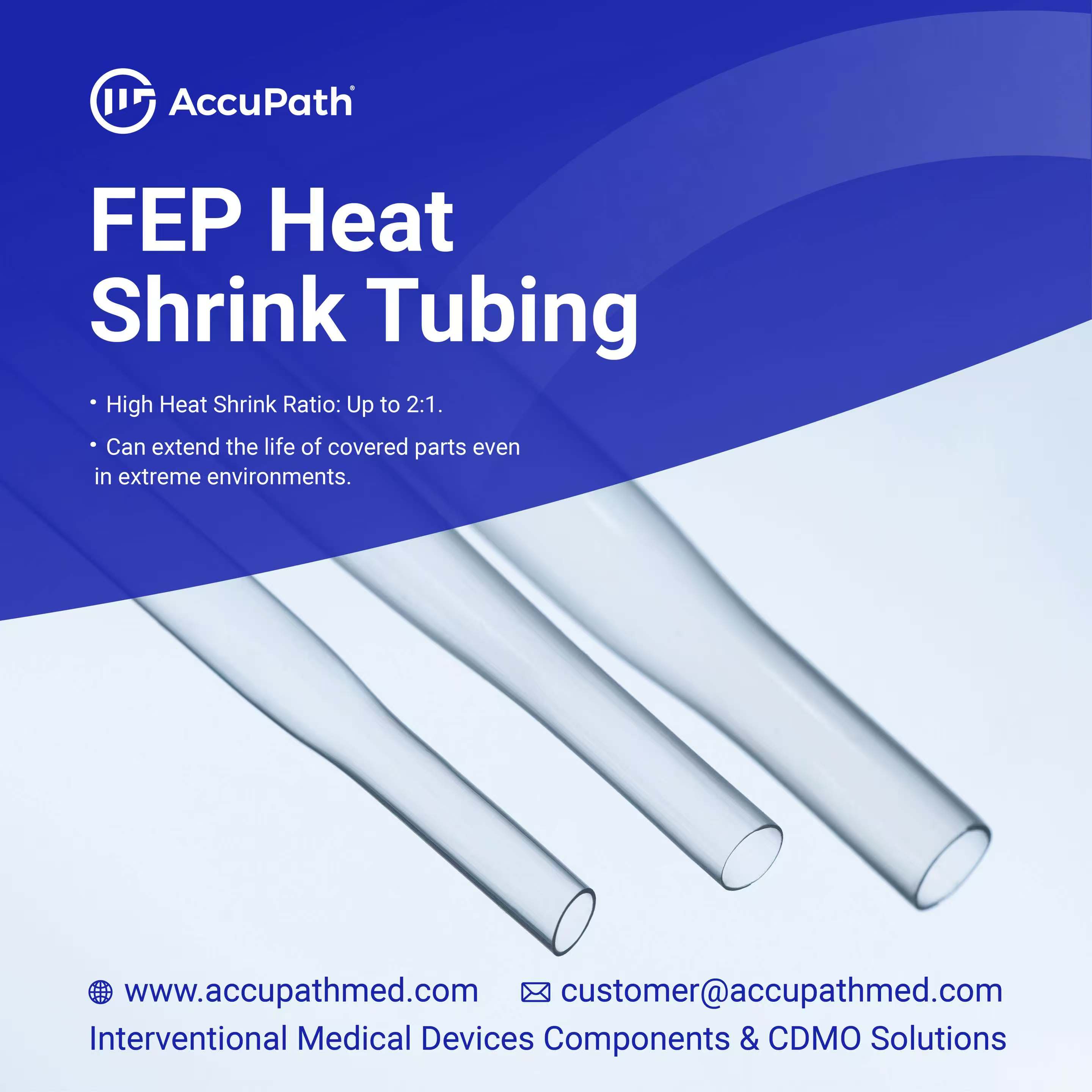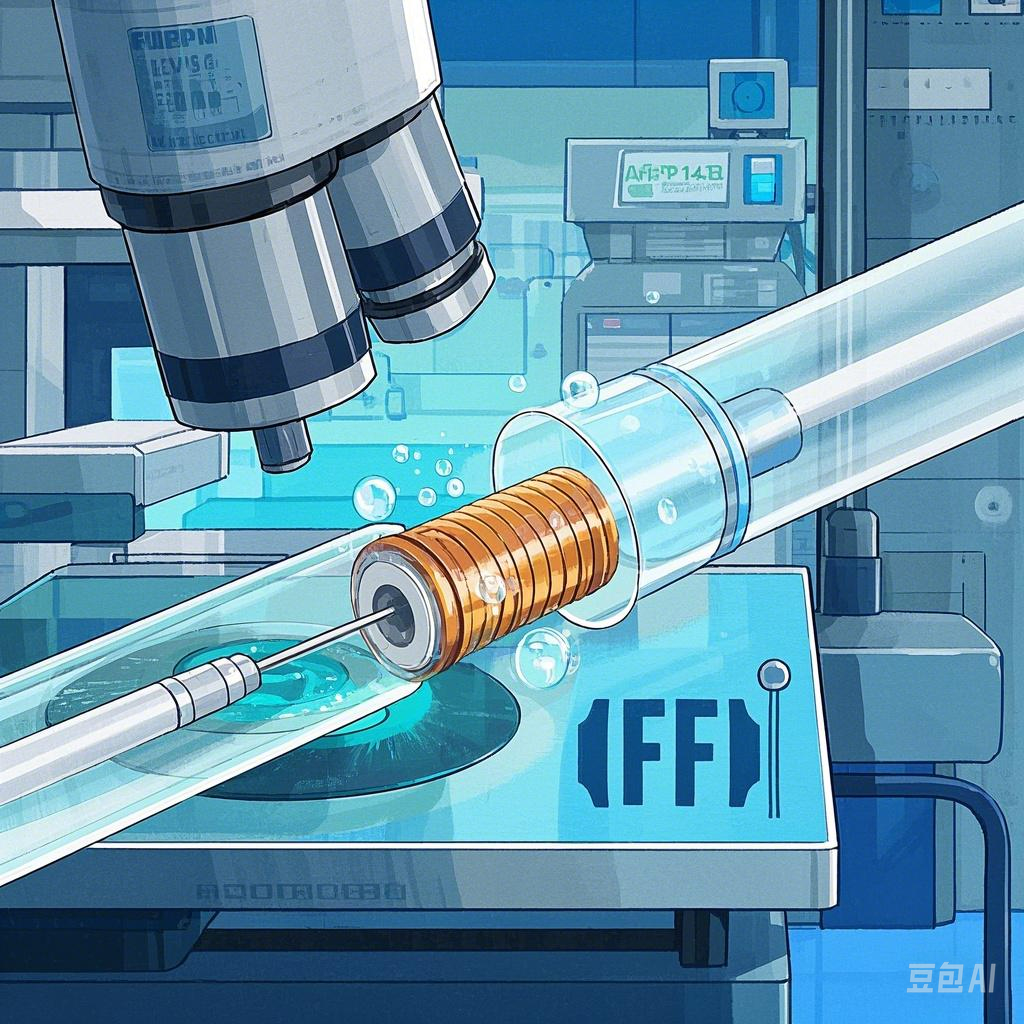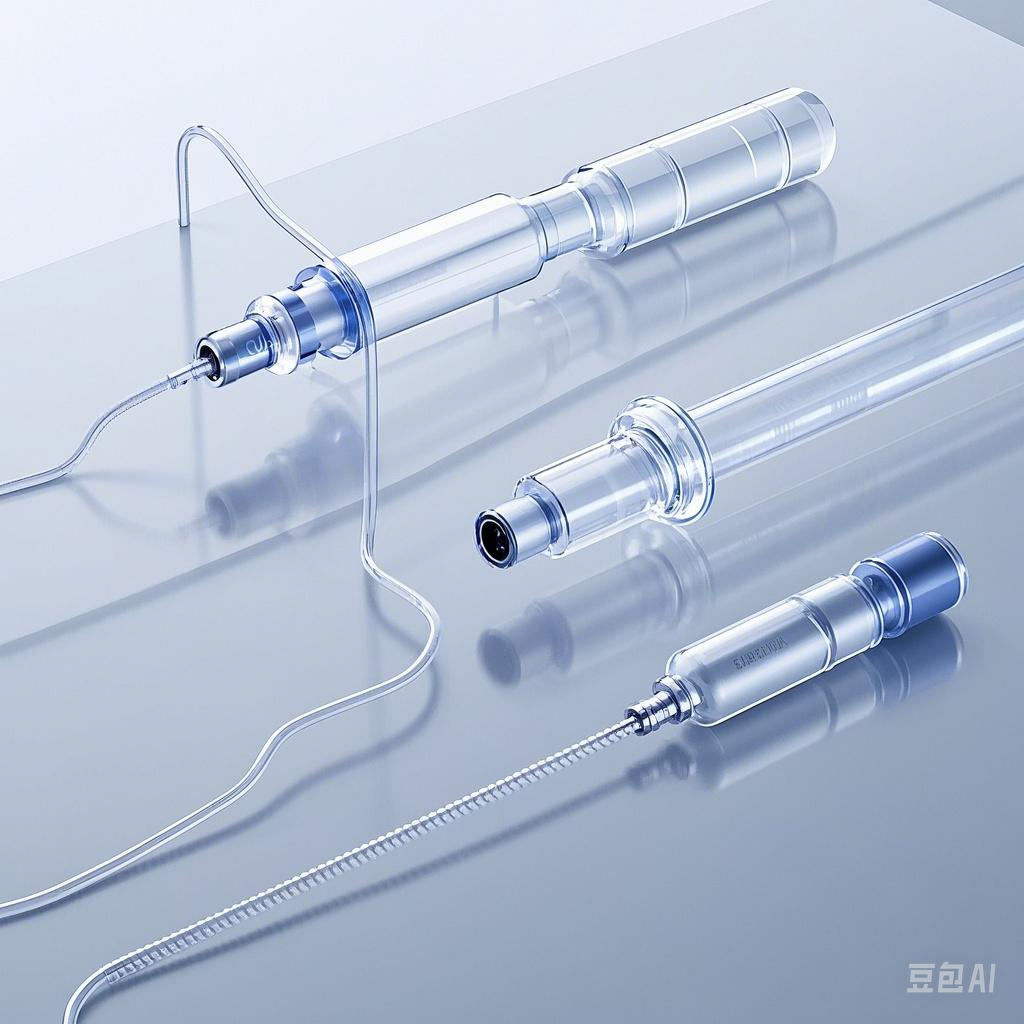Top Brands Compared for FEP Heat Shrink Tubing

FEP heat shrink tubing plays a vital role in industries like medical, aerospace, and electronics. Its unique properties, such as chemical resistance, high-temperature tolerance, and biocompatibility, make it indispensable for demanding applications. This material ensures durability and safety in medical devices, protects sensitive components in electronics, and withstands extreme conditions in aerospace environments. Compared to alternatives like PTFE, FEP offers greater flexibility, optical clarity, and a lower shrink temperature, making it a preferred choice for precision tasks. With its versatility, FEP high-performance heat shrink tubing continues to set the standard for reliability and innovation.
Overview of Top Brands in FEP Heat Shrink Tubing

Brand 1: Zeus Company LLC
Key Features and Specifications
Zeus Company LLC stands out for its high-performance FEP heat shrink tubing, which combines dielectric strength, chemical resistance, and temperature tolerance. Zeus offers unique solutions like PEEKshrink™, a heat shrinkable PEEK tubing that withstands temperatures up to 500°F (260°C). This tubing provides unmatched mechanical strength and purity, making it ideal for demanding environments.
Industry Applications and Compliance
Zeus heat shrink tubing is a preferred choice in industries such as aerospace, automotive, and medical. In medical applications, it plays a crucial role in catheter design by reflowing nylon or Pebax® jackets over braiding. Its compliance with FDA standards and other certifications ensures its suitability for sensitive applications. In aerospace and automotive sectors, Zeus tubing protects components from heat, corrosion, and moisture, extending their lifespan.
Customer Reviews and Feedback
Users often commend Zeus for its innovative product range and exceptional performance in harsh conditions. Many appreciate the tubing's versatility and reliability across various industries. Some customers note that Zeus products may require a higher initial investment, but they emphasize the long-term value and durability provided by the brand.
Brand 2: TE Connectivity
Key Features and Specifications
TE Connectivity offers FEP heat shrink tubing designed for high-performance applications. Their tubing provides excellent resistance to chemicals, heat, and wear. It is engineered to deliver precise shrink ratios, ensuring a snug fit over components. TE Connectivity focuses on creating products that meet the rigorous demands of modern industries.
Industry Applications and Compliance
TE Connectivity's heat shrink tubing is widely used in electronics, medical devices, and industrial equipment. Its compliance with global standards makes it a trusted choice for critical applications. For instance, in electronics, it protects wiring and sensitive components from environmental stress. In medical devices, it ensures biocompatibility and durability under sterilization processes.
Customer Reviews and Feedback
Customers value TE Connectivity for its consistent product quality and extensive distribution network. Many users highlight the tubing's ease of installation and its ability to maintain performance under challenging conditions. Some feedback suggests that while the brand offers competitive pricing, availability may vary depending on the region.
Brand 3: AccuPath
Key Features and Specifications
Aokeray specializes in flexible FEP heat shrink tubing, particularly for medical applications. Their tubing is known for its optical clarity, flexibility, and chemical resistance. Aokeray's products feature a low shrink temperature, making them ideal for precision tasks where minimal thermal impact is essential. The brand also emphasizes affordability without compromising on quality, making it a popular choice for budget-conscious buyers.
Industry Applications and Compliance
Aokeray's FEP heat shrink tubing is widely used in the medical sector. It is FDA-approved, ensuring safety and compliance for sensitive applications. The tubing is often utilized in catheter manufacturing and other medical devices requiring biocompatibility. Beyond medical uses, Aokeray's products also find applications in electronics and industrial equipment, where they protect components from heat and chemical exposure.
Customer Reviews and Feedback
Users frequently commend AccuPath for its cost-effective solutions and reliable performance. Many customers appreciate the tubing's flexibility and ease of use in medical and industrial applications. Some reviews mention that while the brand offers competitive pricing, the product's durability and quality remain consistent with higher-end options.
Detailed Comparison of Key Factors
Product Quality and Durability
Material Composition and Performance
When evaluating heat shrink tubing, material composition plays a critical role in determining its performance. FEP heat shrink tubing stands out due to its unique properties, such as optical clarity, flexibility, and biocompatibility. These features make it a preferred choice for industries like medical and aerospace. Compared to conventional alternatives like PTFE or PFA, FEP tubing offers a lower shrink temperature, which reduces the risk of damaging sensitive components during application. This characteristic ensures precision and reliability in demanding environments.
On the other hand, some alternatives, such as PEEK-based tubing, provide higher mechanical strength and temperature resistance. While these materials excel in specific applications, they lack the versatility and ease of use that FEP high-performance heat shrink tubing delivers. By choosing the right material, you can ensure optimal performance tailored to your specific needs.
Resistance to Heat, Chemicals, and Wear
FEP heat shrink tubing exhibits excellent performance characteristics in terms of resistance to heat, chemicals, and wear. Its ability to withstand high temperatures without degrading makes it ideal for applications in harsh environments. Additionally, its chemical resistance ensures protection against corrosive substances, which is crucial for industries like electronics and medical devices.
In comparison, PTFE and PFA tubing also offer strong chemical resistance but may not provide the same level of flexibility or optical clarity. PEEK-based tubing, while highly durable, often comes with a higher cost and limited shrink capabilities. Understanding these differences helps you select the most suitable heat shrink materials for your application.
Pricing and Value for Money
Price Range Across Brands
The cost of FEP heat shrink tubing varies significantly across brands. Premium manufacturers like 3M and Zeus Company LLC often charge higher prices due to their focus on quality and innovation. Brands like Aokeray, however, provide more budget-friendly options without compromising on essential features. For example, Aokeray's tubing is FDA-approved and widely used in medical applications, making it a cost-effective choice for healthcare facilities.
Compared to alternatives like PTFE or PFA tubing, FEP tubing generally comes with a higher price tag. This difference may deter buyers with tight budgets. However, the long-term benefits, such as durability and reliability, often justify the initial investment. By balancing cost and performance, you can achieve value for money in your purchase.
Cost-Effectiveness for Different Applications
FEP heat shrink tubing proves cost-effective for applications requiring precision and durability. Its lower shrink temperature minimizes energy consumption during installation, reducing operational costs. For industries like aerospace and medical, where reliability is paramount, the higher upfront cost of FEP tubing pays off in the long run.
In contrast, PTFE and PFA tubing may be more suitable for less demanding applications due to their lower cost. PEEK-based tubing, while offering exceptional strength, often exceeds the budget for standard uses. By aligning your choice with your application requirements, you can maximize cost-effectiveness.
Availability and Distribution
Ease of Procurement
The availability of heat shrink tubing depends on the brand and region. Leading manufacturers like TE Connectivity and Parker-Hannifin Corporation have extensive distribution networks, ensuring easy access to their products. These brands often collaborate with global suppliers, making their tubing readily available for international buyers.
Smaller brands like Aokeray may have limited distribution channels, which could affect procurement timelines. However, their focus on affordability and quality makes them a viable option for local buyers. By considering the ease of procurement, you can avoid delays and ensure timely project completion.
Global vs. Local Availability
Global brands like 3M and Zeus Company LLC dominate the market with their widespread presence. Their products are available in multiple regions, catering to diverse industries. This global reach ensures consistent supply and support for large-scale operations.
Local brands, while limited in reach, often provide competitive pricing and faster delivery within their regions. For small-scale projects or budget-conscious buyers, these brands offer a practical alternative. By weighing global versus local availability, you can make an informed decision based on your logistical needs.
Compliance with Industry Standards
Certifications and Approvals
When selecting FEP heat shrink tubing, certifications and approvals play a crucial role in ensuring product reliability and safety. Manufacturers often pursue certifications like ISO 13485, which demonstrates their commitment to producing high-quality materials for medical devices. This certification ensures that the tubing meets stringent requirements for biocompatibility and durability, reducing risks associated with product failures or delays in market entry.
For aerospace and industrial applications, compliance with AS23053 standards guarantees that the tubing adheres to strict specifications for thermal stability, chemical resistance, and mechanical performance. These standards ensure that the tubing can withstand extreme conditions, making it suitable for critical environments. Additionally, many brands exceed the intent of these standards, showcasing their dedication to delivering superior products.
Some manufacturers also hold QMS (Quality Management System) certifications, which confirm their adherence to aerospace, automotive, and military standards. This certification reflects their ability to consistently meet or exceed customer expectations, providing you with confidence in their products' quality and performance.
"ISO certifications demonstrate a company's ability to consistently provide products and services that meet customer and regulatory requirements." – ISO Certification Guidelines
Suitability for Specific Industries (e.g., medical, aerospace)
FEP heat shrink tubing must align with the unique demands of various industries. In the medical field, tubing requires FDA approval and compliance with ISO 13485 standards. These certifications ensure that the materials are safe for use in sensitive applications like catheter manufacturing or surgical instruments. The careful selection of certified materials minimizes the risk of product failures, safeguarding both patients and healthcare providers.
In aerospace, tubing must meet rigorous standards like AS23053 to ensure reliability under extreme temperatures and pressures. This compliance guarantees that the tubing can protect critical components from environmental stress, enhancing the safety and longevity of aerospace systems. Similarly, in the automotive sector, QMS-certified tubing ensures compatibility with demanding applications, such as protecting wiring harnesses from heat and abrasion.
For electronics, certifications related to dielectric strength and chemical resistance are essential. These approvals confirm that the tubing can shield sensitive components from electrical interference and corrosive substances, ensuring optimal performance in high-stakes environments.
By choosing tubing with the right certifications and industry-specific approvals, you can ensure that your application meets regulatory requirements while achieving long-term reliability.
Recommendations Based on Use Cases

Best for High-Temperature Applications
When working in environments with extreme heat, you need tubing that can withstand high temperatures without compromising performance. Zeus Company LLC and TE Connectivity excel in this category. Zeus offers specialized solutions like PEEKshrink™, which tolerates temperatures up to 500°F (260°C). This makes it ideal for aerospace and industrial applications where thermal stability is critical. TE Connectivity also provides FEP heat shrink tubing with excellent heat resistance, ensuring durability in demanding conditions.
FEP tubing, in general, stands out for its high-temperature tolerance compared to alternatives like PVC or silicone. While PFA tubing offers similar heat resistance, FEP provides greater flexibility and optical clarity, making it a more versatile choice. For applications requiring custom sizes, brands like Zeus and TE Connectivity often accommodate specific needs, ensuring a precise fit for your components.
Best for Budget-Conscious Buyers
If you are looking for cost-effective solutions without sacrificing quality, AccuPath stands out as the best option. Known for its affordability, AccuPath offers FDA-approved FEP heat shrink tubing widely used in medical applications. Despite its lower price, the tubing maintains excellent chemical resistance and flexibility, making it suitable for precision tasks.
FEP tubing is generally more affordable than alternatives like PFA or PEEK-based tubing. Silicone and PVC may offer cheaper options, but they lack the durability and performance required for demanding environments. AccuPath’s focus on providing reliable products at competitive prices makes it an excellent choice for budget-conscious buyers who still require high-quality materials.
Key Considerations for Specialized Applications
Customization: Look for brands that offer tailored solutions to meet your specific requirements. AccuPath excel in this area.
Certifications: Ensure the tubing complies with industry standards like FDA approval for medical use or AS23053 for aerospace applications.
Performance: Evaluate the tubing's ability to withstand extreme conditions, such as high temperatures, chemical exposure, or mechanical stress.
By choosing a brand that aligns with your specialized needs, you can ensure optimal performance and reliability in your application.
Choosing the right FEP high-performance heat shrink tubing depends on your specific needs. Each brand offers unique strengths. For high-temperature applications, Zeus and TE Connectivity provide excellent durability. Budget-conscious buyers will find AccuPath a reliable and affordable option. Consider factors like material properties, certifications, and application requirements to make an informed decision. FEP high-performance heat shrink tubing remains a versatile and customizable solution for industries like medical, aerospace, and electronics, ensuring precision and reliability in demanding environments.
FAQ
What is FEP heat shrink tubing used for?
FEP heat shrink tubing is ideal for applications requiring high-temperature resistance, chemical durability, and precision. You can use it in industries like medical, aerospace, and electronics to protect sensitive components, insulate wiring, or ensure biocompatibility in medical devices.
How does FEP heat shrink tubing differ from PTFE?
FEP and PTFE share similar properties, such as excellent chemical resistance and high-temperature tolerance. However, FEP offers greater flexibility, optical clarity, and a lower shrink temperature. These features make FEP more suitable for precision tasks, while PTFE is often chosen for its higher mechanical strength.
What are the key benefits of using FEP heat shrink tubing?
FEP heat shrink tubing provides several advantages:
Chemical Resistance: Protects against corrosive substances.
High-Temperature Tolerance: Performs well in extreme heat.
Flexibility: Adapts to various shapes and sizes.
Optical Clarity: Ensures visibility for inspection purposes.
Biocompatibility: Safe for medical applications.
These benefits make it a versatile choice for demanding environments.
Can FEP heat shrink tubing be used in medical applications?
Yes, FEP heat shrink tubing is widely used in medical applications. Its biocompatibility and compliance with FDA standards make it suitable for manufacturing catheters, surgical instruments, and other medical devices. It also withstands sterilization processes without compromising performance.
How do you choose the right size of FEP heat shrink tubing?
To select the correct size, measure the diameter of the component you want to cover. Choose tubing with an expanded diameter slightly larger than the component and a recovered diameter smaller than it. This ensures a snug fit after shrinking.
What are FEP and PTFE heat shrink tubing designed for?
FEP and PTFE heat shrink tubing are designed for high-temperature and aggressive environments. They provide excellent chemical resistance, insulation, and non-stick properties, making them reliable for protecting components in harsh conditions.
How do you install FEP heat shrink tubing?
To install FEP heat shrink tubing:
Slide the tubing over the component.
Use a heat gun or other controlled heat source to apply heat evenly.
Allow the tubing to shrink and form a tight seal around the component.
Avoid overheating to prevent damage to the tubing or the component.
Is FEP heat shrink tubing reusable?
No, FEP heat shrink tubing is not reusable. Once it shrinks to fit a component, it cannot return to its original size. If you need to replace it, you must use a new piece of tubing.
What industries benefit most from FEP heat shrink tubing?
Industries that benefit the most include:
Medical: For biocompatible and sterilizable applications.
Aerospace: To protect components from extreme temperatures and environmental stress.
Electronics: For insulating and safeguarding sensitive wiring.
Industrial: To shield equipment from chemicals and wear.
Its versatility makes it a valuable material across various sectors.
How does FEP heat shrink tubing compare in cost to alternatives?
FEP heat shrink tubing typically costs more than alternatives like PVC or silicone but less than PFA or PEEK-based tubing. While the initial investment may be higher, its durability, chemical resistance, and precision often provide better long-term value.
See Also
Global Comparison of Etched PTFE Liner Manufacturers
The Importance of Ultra-Thin PET Heat Shrink Tubing
Selecting the Optimal PTFE Etched Liner for Your Needs

